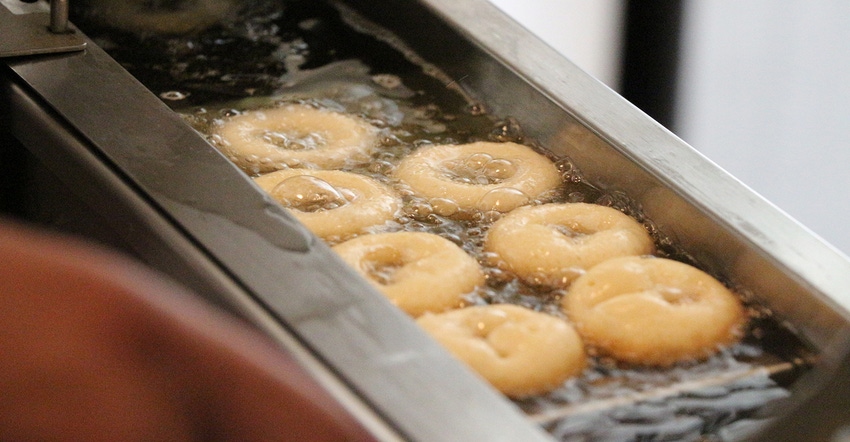October 1, 2017

Sponsored Content
Soybean oil enjoyed a long run as king in the food oil industry. It was everything the food industry wanted in an ingredient – plentiful, cost-effective and it allowed foods’ natural flavors to shine.
But just like everything else in agriculture, change happens. Consumers started becoming more health conscious. Then the U.S. Food and Drug Administration mandated the labeling of trans fats in foods. Unfortunately for soybeans, its oil requires partial hydrogenation for some food uses, which creates trans fats.
The food industry responded, and in the fallout, farmers lost 4 billion pounds of annual soybean food demand to canola and other crops.
Luckily for soybean farmers, their checkoff was already working on an answer with major seed development leaders DuPont Pioneer and Monsanto.
The result was high oleic soybeans.
Now in its sixth year, high oleic soybeans have put soybean farmers right back in the game with food manufacturers and restaurants.
“High oleic soybeans have everything our customers want in an oil,” says David Tillman, vice president of sales and marketing for Stratas Foods, LLC, a leading food oil supplier. “They like high oleic for its superior cooking properties, its long shelf life and fry life, and its better nutritional profile.”
For farmers, high oleic soybeans are an opportunity to make soybean oil king again. That’s because it boasts a nutritional profile with zero trans fats, the major barrier of commodity soybeans. That’s important since food use is the highest value opportunity for soybean oil. Not only is it lucrative, but the demand is there.
“They’re asking for it. It’s time for us to deliver,” says Mike Beard, a soybean farmer from Frankfort, Indiana, who’s increased his high oleic acres in 2016. “Demand is increasing every year. With demand comes price, and with price comes profit.”
Contract opportunities are growing each year. The modest premium being paid for high oleic soybeans becomes even more attractive for farmers looking to increase their on-farm profitability.
“With margins as tight as they are, a premium can be the difference between a profit and a loss,” adds Beard. Premiums vary depending on location but average around 50 cents per bushel.
The high oleic soybean market is on the verge of taking off. They are grown on more than 625,000 acres this year – primarily in Indiana, Ohio and Michigan, but including areas of Nebraska, Minnesota, Iowa, Illinois, Pennsylvania, New Jersey and the Delmarva Peninsula. New locations are being added every year, and current programs are expanding their offerings.
The crop production capabilities have food companies taking serious note. When they look at high oleic soybeans, they see the qualities that can make soybeans king again – most notably a plentiful supply. Which is why the U.S. soy industry sees the opportunity for high oleic soybeans to reach 18 million acres, which would make it the fourth-largest grain and oilseed crop in the United States, behind corn, commodity soybeans and wheat.
“The demand is there for the taking,” says Beard. “Now we need to grow the bean.”
Farmers can find locations requesting high oleic soybeans and their delivery options at SoyInnovation.com.
INNOVATION BEYOND THE BUSHEL
©2017 United Soybean Board
About the Author(s)
You May Also Like




